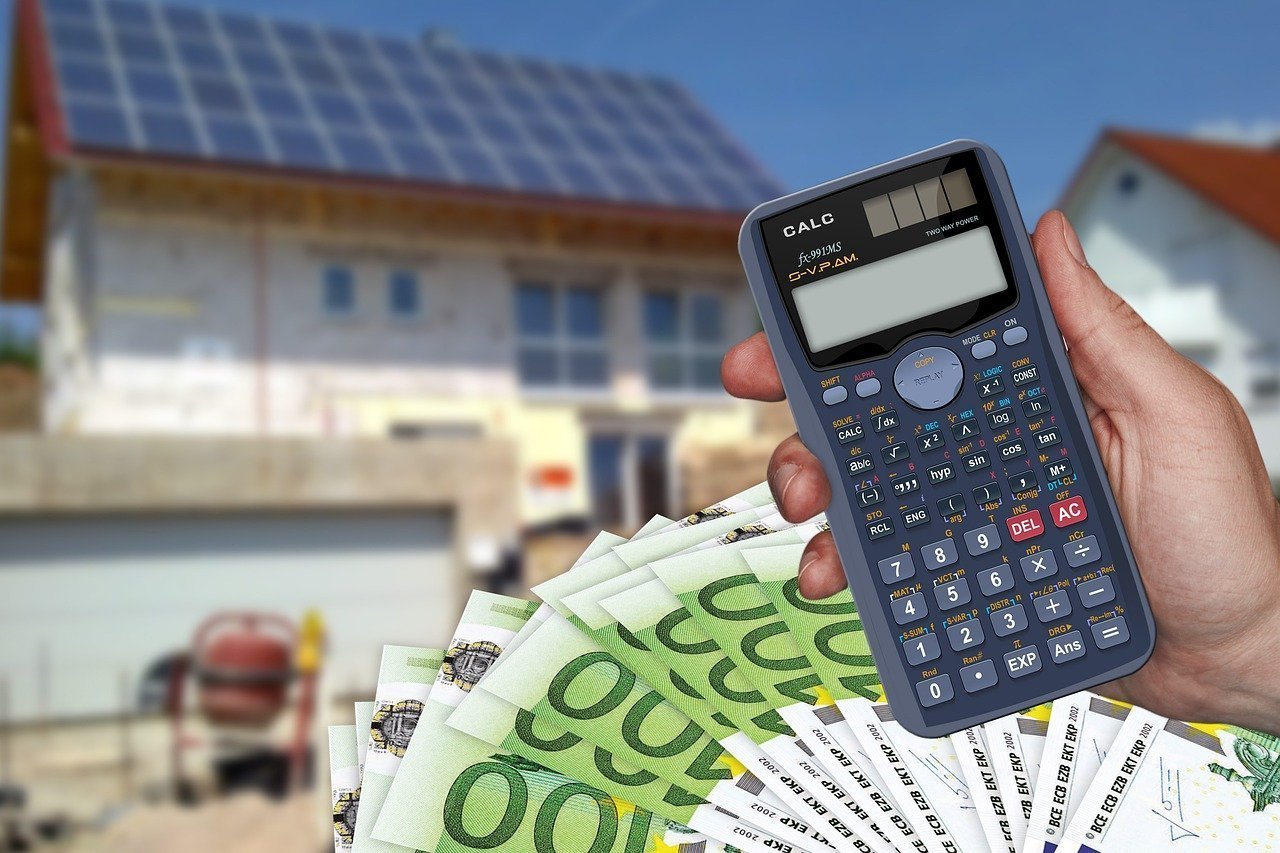Record High Prices Despite Cooling Demand
The U.S. housing market continues to defy traditional economics, with home prices reaching unprecedented heights even as buyer demand remains frustratingly low. The median price for an existing home sold last month was $435,300, besting the previous record, set in June 2024, according to data from the National Association of Realtors. Yet this price surge comes amid what experts call one of the most challenging market environments in decades. But overall, sales numbers were at a nine-month low, seasonally adjusted. Sales in June decreased 2.7% from a month earlier. This unusual combination of high prices and low activity has left many scratching their heads about what’s really happening in America’s housing market.
Mortgage Rates Remain Stubbornly High
This week, the 30-year fixed-rate mortgage essentially remained flat at 6.74%. These elevated borrowing costs represent more than double what buyers enjoyed during the pandemic’s early days. The average rate on the 30-year fixed mortgage has hovered in the high 6% range for most of this year, double what it was during the early days of the pandemic, when home prices initially took off. The Mortgage Bankers Association (MBA) is projecting that 30-year mortgage rates will stabilize around the 6.5% mark for the foreseeable future.
For many potential buyers, these rates have become a crushing burden. For those who are trying to enter the market and buy their first home, these high rates on top of high prices mean they simply can’t make the numbers work. Each percentage in interest can add hundreds of dollars to a monthly payment. The math is simple but brutal – higher rates mean fewer qualified buyers, yet somehow prices keep climbing.
The Great Inventory Paradox
Housing inventory tells a confusing story that perfectly captures the market’s current dysfunction. In June, the total number of unsold homes in the country was up 20 percent compared with a year earlier, according to Realtor.com, while inventory was up by 28.9 percent year-over-year. On paper, this sounds like great news for buyers looking for more options. However, the reality is far more complex.
In part, this surge in inventory is due to the fact that many homeowners who were locked into their homes by relatively lower monthly payments have stopped waiting for mortgage rates to come down any time soon. In part, the number of homes for sale in the market is also growing because many of these properties are sitting on the market without finding interested buyers. Think of it like a restaurant with plenty of empty tables but no customers willing to pay the menu prices – the supply exists, but demand has evaporated.
Home Sales Plummet to Historic Lows

Home Sales: After falling sharply in 2023 and 2024 to the lowest levels in almost 30 years and continuing to falter in 2025, existing home sales are predicted to slowly increase through 2030 as mortgage rates decline. This represents a stunning reversal from the frenzied buying activity that characterized the pandemic era. “Home sales have been at 75 percent of normal or pre-pandemic activity for the past three years, even with seven million jobs added to the economy,” said NAR chief economist Lawrence Yun in a statement. “Pent-up housing demand continues to grow, though not realized. Any meaningful decline in mortgage rates will help release this demand.”
The numbers paint a stark picture of buyer retreat. Millions of Americans want to buy homes but simply cannot afford to do so at current price and rate combinations, creating a massive pool of frustrated potential buyers waiting on the sidelines.
Regional Markets Show Growing Cracks

Nearly one-third of the largest 100 markets are now showing annual price declines of at least a full percentage point from recent highs, and the trend suggests more markets will do the same. This geographic fragmentation reveals how different areas are responding to market pressures in vastly different ways. Cape Coral, Florida, saw the biggest decline, with prices down just over 9%. Austin, Texas, and Tampa, Florida, are also seeing price declines, as are seven of the 10 major markets in these regions.
While house prices increased last year in the Northeast and California, in some places, particularly in the Sun Belt from Florida to Texas, prices actually dropped. This regional variation suggests that certain markets may be leading indicators of broader national trends, with previously hot areas now experiencing the reality check that economists have long predicted.
The Lock-In Effect Continues to Distort Supply
One of the most significant factors constraining housing supply comes from an unexpected source – existing homeowners themselves. As of the fourth quarter of 2024, Realtor.com estimated that 82% of homeowners with mortgages had interest rates below 6%. That share was down from nearly 93% in early 2023 and could approach 75% by the end of 2025. This creates a powerful incentive for homeowners to stay put rather than trade up or downsize.
Mortgage rates are also discouraging people from selling, she continues: “We also know the lock-in effect is real. People who have lower-interest-rate mortgages are just not willing to make this move right now unless they have a lot of housing equity.” It’s like having a rent-controlled apartment in Manhattan – why would you ever give up that sweet deal?
Economic Uncertainty Dampens Buyer Confidence

Economic uncertainty, including concerns about job security and a potential recession, is a major factor contributing to home buyer hesitancy in early 2025. When people feel uncertain about the economy in general—and their income situation in particular—they are less likely to make a major purchase like buying a house. Anxieties about inflation, government debt, and potential layoffs appear to be having a cooling effect on the real estate market.
“That means higher recession risk, and more buyers just want to wait and see how things land.” “buyers are more wary now because macroeconomic policy has been more volatile than expected, and tariffs have been higher than expected,” Chen Zhao, head of economics research at Redfin, previously told Newsweek. This wait-and-see attitude has become self-reinforcing, as fewer buyers mean less market activity, which creates more uncertainty about where prices and rates are headed.
New Construction Faces Its Own Challenges

According to the Census Bureau, sales of newly built single-family homes in May were down 13.7% from April and 6.3% from May 2024. Based on monthly sales rates in May, supply for new single-family homes rose to 9.8 months – more than double the level of existing single-family supply of 4.4 months. This represents a dramatic turnaround for builders who had been one of the few bright spots in the housing market.
A June survey by the National Association of Home Builders showed 37% of builders cutting prices by an average of 5% – the highest level since monthly tracking of this figure started in 2022 – and up from 29% in April. Meanwhile, 62% of builders reported offering sales incentives, up one percentage point from May. When builders start slashing prices and offering generous incentives, it’s usually a sign that demand has softened significantly.
Expert Predictions Point to Continued Slowdown
The U.S. housing market is likely to remain largely frozen through 2025. Some growth is still expected, but at a very subdued pace of 3% or less. This forecast from major financial institutions reflects a consensus that the current market dysfunction will persist well into the future. “Slower house price growth and rising inventory are not indicators that demand will soon improve—they’re symptoms of its persistent weakness,” Krimmel said. “Overall, we expect a slow rebalancing rather than a sharp correction—unless economic conditions shift more dramatically.”
Although an outright recession is not currently being predicted, GDP growth is expected to decline sharply from the robust rates of 2.9% in 2023 and 2.8% in 2024 to just 1.4% in 2025. While the Fed forecasts a rebound by 2026 and 2027, growth is expected to remain muted at 1.6% to 1.8%. This economic backdrop suggests that housing market recovery may be years away rather than months.
Price Growth Decelerates Across the Nation
Fannie Mae’s survey of over 100 housing experts in Q4 2024 showed that most experts believe home price growth will continue to slow down. The consensus view in their real estate forecast for next 5 years is that national home price growth will decelerate to 3.8% in 2025 and 3.6% in 2026. This is a slowdown compared to the 5.2% growth in 2024.
Annual home price growth in June was just 1.3%, down from 1.6% growth in May and the slowest rate in two years, according to ICE, a mortgage technology firm. For a market accustomed to double-digit annual increases, this deceleration represents a fundamental shift. The question isn’t whether price growth will slow – it’s whether prices will eventually start declining in major markets nationwide.
No Housing Crash Expected Despite Warning Signs
Despite all the concerning trends, most experts remain adamant that a housing market crash similar to 2008 is not on the horizon. In general, economists don’t foresee a housing market crash anytime in 2025. According to recent insights from JPMorgan, it’s predicted that supply won’t outpace the demand for homes. Housing experts point out that home supply is gradually increasing — but the operative word is “gradually.” Supply would have to move much faster to contribute to a crash.
Lending standards remain strict: Back in 2007, “liar loans,” in which borrowers didn’t need to document their income, were common. Lenders offered mortgages to just about anyone, regardless of credit history. Today, lenders impose much tougher standards — and successful borrowers have excellent credit. This fundamental difference in lending practices provides a crucial backstop against the kind of widespread defaults that triggered the previous housing crash.
The Path Forward Remains Uncertain
The housing market slowdown warnings from experts reflect a complex interplay of factors that show no signs of quick resolution. “The situation is not going to change until we get mortgage rates back down toward 5%, or even lower,” Sim said. “And we aren’t forecasting mortgage rates to breach 6% in 2025 — they should ease only slightly to 6.7% by the year end.” Based on this, demand looks set to remain at exceptionally low levels.
While a dramatic crash appears unlikely, the current trajectory suggests a prolonged period of market stagnation. The U.S. housing market is slowing down in early 2025, with homes taking longer to sell compared to the previous year. Factors contributing to the slowdown include higher mortgage rates, economic uncertainty, and an increase in housing inventory. For millions of Americans, the dream of homeownership may remain frustratingly out of reach until these fundamental market dynamics shift in a more favorable direction.
Regional Markets Tell Different Stories

While national trends paint a grim picture, the reality is that America’s housing market isn’t experiencing a uniform slowdown across all regions. Some metropolitan areas are bucking the trend entirely, with cities like Austin and Miami still seeing competitive bidding wars despite higher mortgage rates. Meanwhile, previously red-hot markets in California and the Pacific Northwest are cooling off dramatically — San Francisco home sales dropped 23% year-over-year in early 2025, according to recent data. The Midwest and Southeast are somewhere in between, with modest price increases but significantly longer days on market. This patchwork of regional performance means that whether you’re a buyer or seller, your local market conditions matter far more than national headlines suggest. What’s happening in your neighborhood could be completely different from what’s making news.

